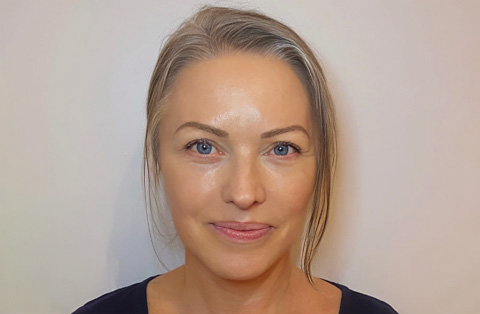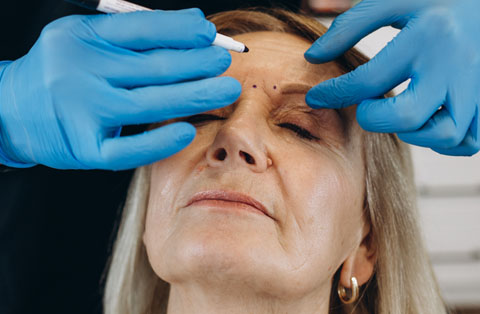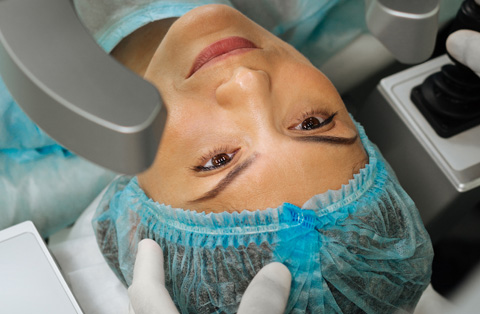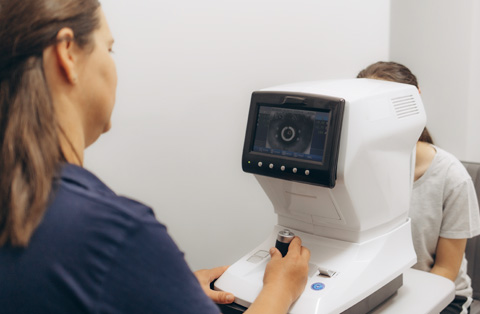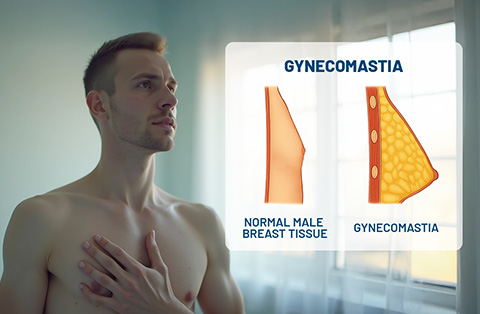Facelift surgery, often sought for its rejuvenating effects, can occasionally lead to disappointing or adverse results. Recognizing the signs of a botched facelift is crucial for those experiencing dissatisfaction or discomfort following the procedure. This article explores the common indicators of an unsuccessful facelift and provides insights into corrective options available for those affected by plastic surgery disasters.
A botched facelift may manifest as distorted facial features, excessive scarring, uneven face contours, or prolonged swelling and pain. These complications can deeply impact one’s emotional and physical well-being. Fortunately, corrective measures, including revision surgeries and non-surgical interventions, exist to address these issues. Understanding the signs and knowing the solutions empowers individuals to seek the help they need to restore their appearance and confidence.
Continue reading to delve deeper into the signs of a botched facelift, the underlying causes of these outcomes, and the effective treatments that can turn a plastic surgery mishap into a story of recovery and satisfaction.
What is a Botched Facelift?
A botched facelift refers to a cosmetic surgery that has resulted in undesirable outcomes. This can include visible scarring, unnatural facial expressions, or uneven skin contours. Patients may experience prolonged swelling, pain, or a distorted appearance.
Such complications can significantly affect one's emotional well-being and physical appearance. Often, corrective procedures are necessary to address these issues and restore a more natural and satisfactory look.
Signs of a Botched Facelift
Signs of a botched facelift are noticeable and can vary in severity. Patients might see excessive scarring or feel persistent pain long after the expected recovery period. The skin may appear unevenly tight or asymmetrical. Some individuals experience a loss of muscle tone or function, leading to difficulty in facial expressions. These issues not only disrupt aesthetics but also impact daily comfort and confidence.
Botched Facelift Signs:
Excessive Scarring: Thick, visible scars that do not fade.
Persistent Pain: Ongoing discomfort beyond normal healing time.
Skin Asymmetry: Uneven tightness or misalignment of facial features.
Impaired Muscle Function: Difficulty moving facial muscles smoothly.
Unnatural Facial Expressions: Stiffness or inability to express naturally.
Uneven Contours: Lumps or skin folds that are irregular.
Botched Celebrity Facelifts: Learning from Famous Surgery Disasters
Botched celebrity facelifts offer valuable lessons about the risks of plastic surgery. Famous cases have highlighted the importance of choosing experienced surgeons and setting realistic expectations. Celebrities suffering from poor facelift outcomes remind us that even with the best resources, things can go wrong.
These public examples stress the need for thorough research and consultations before undergoing cosmetic procedures. They serve as cautionary tales that emphasize quality and safety over dramatic transformations.
Donatella Versace's facelift: What went wrong
Donatella Versace's facelift drew significant public attention due to its unnatural outcome. Critics pointed out her overly tight skin and altered facial features, which suggested excessive surgical modifications. The result was a stark departure from her natural appearance, characterized by a stretched, shiny look.
This case highlights the risks of aggressive cosmetic procedures that prioritize dramatic changes over subtlety. It serves as a reminder of the importance of moderation and aiming for enhancements that preserve and complement one's inherent features.
The transformation of Mickey Rourke: Recognizing facelift mishaps
Mickey Rourke's transformation through facelift surgery shows how cosmetic procedures can lead to unexpected results. His facial features became noticeably altered, with tightened skin and a somewhat asymmetrical appearance. This change sparked discussions about the potential mishaps in plastic surgery, emphasizing the risks involved.
Rourke's case underlines the importance of careful planning and realistic goals in cosmetic surgery. It also highlights the necessity for choosing highly skilled surgeons to avoid drastic and unwanted changes.
Heidi Montag and the quest for plastic perfection
Heidi Montag's journey toward plastic perfection involved undergoing multiple surgeries in a single day, including a facelift. This pursuit highlighted the extreme lengths some go to achieve an idealized beauty standard. Her extensive procedures led to public scrutiny and personal health issues, showcasing the potential dangers of excessive cosmetic surgery.
Montag's experience serves as a cautionary tale about the risks of prioritizing appearance over health and the importance of setting realistic beauty expectations.
Can a Bad Facelift Be Corrected? Exploring Revision Facelift
Can a bad facelift be corrected? Yes, through a procedure known as a revision facelift. This surgery aims to fix issues from a previous facelift, such as visible scars, uneven skin, or unnatural facial contours. Experienced surgeons assess the specific problems to tailor the corrective procedure.
They may reposition the skin, adjust underlying tissues, or use less invasive techniques to enhance results. Revision facelifts require careful planning and a clear understanding of the patient's goals. With the right approach, it is possible to improve both the aesthetic outcome and the patient's confidence.
The role of a board-certified plastic surgeon in fixing a botched facelift
A board-certified plastic surgeon plays a crucial role in fixing a botched facelift. These surgeons bring a high level of expertise and adherence to medical standards, essential for correcting previous surgical mistakes. They evaluate the extent of the issues, design a tailored plan for revision, and execute the surgery with precision. Their training ensures they handle both aesthetic and functional aspects of facelift corrections.
Board certification also signifies that the surgeon meets rigorous professional and ethical standards, providing reassurance to patients seeking to rectify a failed procedure and improve their overall appearance and well-being.
Limitations and possibilities of corrective facelift surgery
Corrective facelift surgery offers both limitations and possibilities. It can address issues like asymmetry, scarring, and unnatural tightness from a previous surgery.
However, the extent of improvement depends on the individual's skin condition and the complexity of the initial problems. While it can significantly enhance appearance and self-esteem, it may not always restore the face to its original state.
Patients must have realistic expectations and understand that each additional surgery carries its own risks and recovery challenges.
Considering additional procedures: Eyelid surgery, brow lift, and neck lift
When considering additional procedures alongside a facelift, options like eyelid surgery, brow lift, neck lift, and cheek implants can enhance overall results.
Eyelid surgery can rejuvenate aging eyes, while a brow lift raises drooping eyebrows for a more alert appearance.
A neck lift addresses sagging skin under the chin, creating a smoother neckline.
Each procedure targets specific areas, ensuring a harmonious and balanced rejuvenation. Patients should discuss these options with their surgeon to tailor a comprehensive approach that meets their aesthetic goals.
Choosing the Right Surgeon for Facelift Revision: What You Need to Know
Choosing the right surgeon for facelift revision is crucial. Look for a board-certified plastic surgeon with extensive experience in revision surgeries.
It's essential to review their before-and-after photos to assess their ability to achieve natural-looking results. Discussing their approach and understanding their plan for your specific needs can also provide insights into their expertise. Check reviews and testimonials from other patients to gauge their satisfaction with the surgeon's work.
Ensure the surgeon explains potential risks and the realistic outcomes you can expect. A thorough consultation helps build trust and ensures you are comfortable with their qualifications and approach.
Preventing a Botched Facelift: Tips and Advice
Preventing a botched facelift starts with selecting a highly qualified, board-certified plastic surgeon. Research their credentials, experience, and patient reviews thoroughly.
Have a detailed consultation to discuss your aesthetic goals and understand the realistic outcomes. Ask to see before-and-after photos of previous patients to assess the surgeon's work. Clearly communicate your expectations and listen to the surgeon's professional advice. Consider their recommendations on the best procedures tailored to your facial structure.
Finally, ensure you understand all aspects of the surgery, including the recovery process, potential risks, and post-operative care. Careful planning and open communication are key to achieving the desired results.
Frequently Asked Questions
What percentage of facelifts go wrong?
The percentage of facelifts that go wrong is relatively low. Most studies suggest that complications occur in approximately 1% to 2% of facelift surgeries. Choosing a skilled, board-certified plastic surgeon can significantly minimize the risk of unsatisfactory results.
What age is too late for a facelift?
There is no specific age that is too late for a facelift. Suitability depends more on overall health and skin condition than age. Many individuals in their 70s and 80s undergo facelifts successfully, provided they are in good health and have realistic expectations.
Do facelifts ever look natural?
Facelifts can indeed look natural. When performed by skilled, experienced plastic surgeons, modern facelift techniques focus on enhancing the patient's features subtly. These procedures aim to rejuvenate the face without over-tightening the skin, thus maintaining natural expressions and contours.


